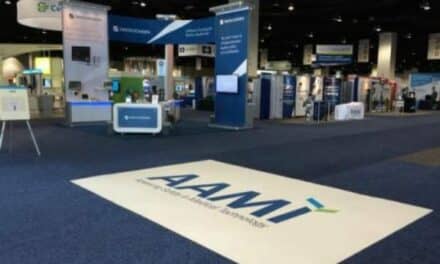George Mills, director of engineering for The Joint Commission, announced Sunday that the Center for Medicare & Medicaid Services (CMS) will be imposing significant new restrictions on the use of power strips.
In his annual appearance before biomeds at the AAMI conference in Philadelphia, Mills said that CMS had informed him that power strips—or as CMS terms them, relocatable power taps—will no longer be sanctioned for use with medical equipment in patient care areas. These areas are defined explicitly to include critical care areas such as operating rooms, recovery areas, intensive care areas, and noncritical patient care areas, including patient rooms, diagnostic areas, and examination rooms.
Mills said that the intent of the new rules appears to be to restrict power strips so they are not used with medical equipment.
Power strips may be used in patient care areas, however, if they are part of the equipment assembly or otherwise integrated into equipment by a manufacturer. Ceiling drops are still acceptable in patient care areas. Power strips may also continue to be used in non–patient care areas, such as nurse stations. Even in non-patient areas, however, precautions must be used with power strips, Mills said. They should never be daisy-chained, for instance. Cords must not become tripping hazards, and power strips must be adequate for the number and types of devices used with them.
Mills’ announcement raised some concerns among his AAMI audience. One attendee said that without access to power strips, the older operating rooms in his facility would require expensive upgrades. Representatives of Tripp-Lite, a leading supplier of hospital-grade power strips exhibiting at AAMI 2014, saw the new rule as a mixed blessing. While it is likely to slow sales of power strips to facilities, it will provide significant incentives for OEMs to build power strips directly into their equipment.




It will be huge expense for hospitals to install critical outlets in all those areas. My understanding is that all American iv power transformer hospital grade are part of this new rule correct?
what about the power strips mounted on the racks in the data center. are those expected to be changed out as well?